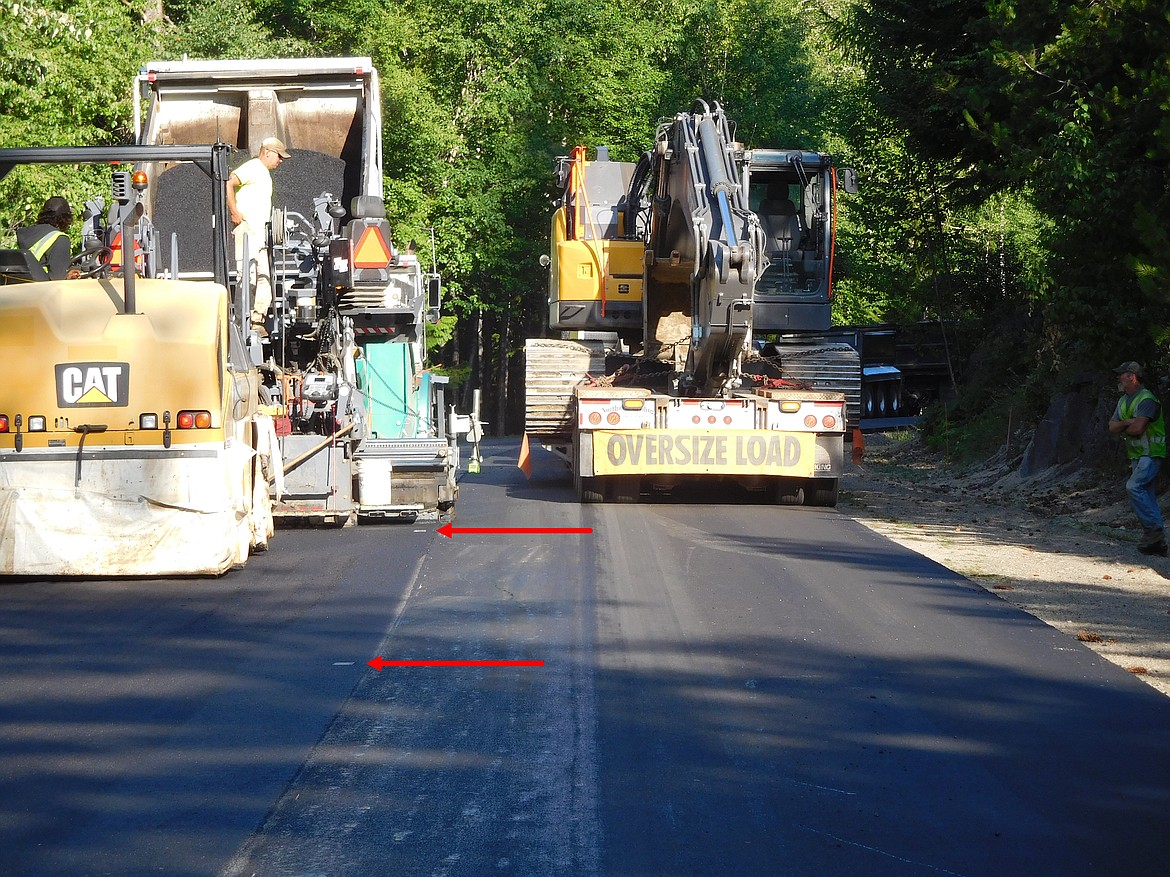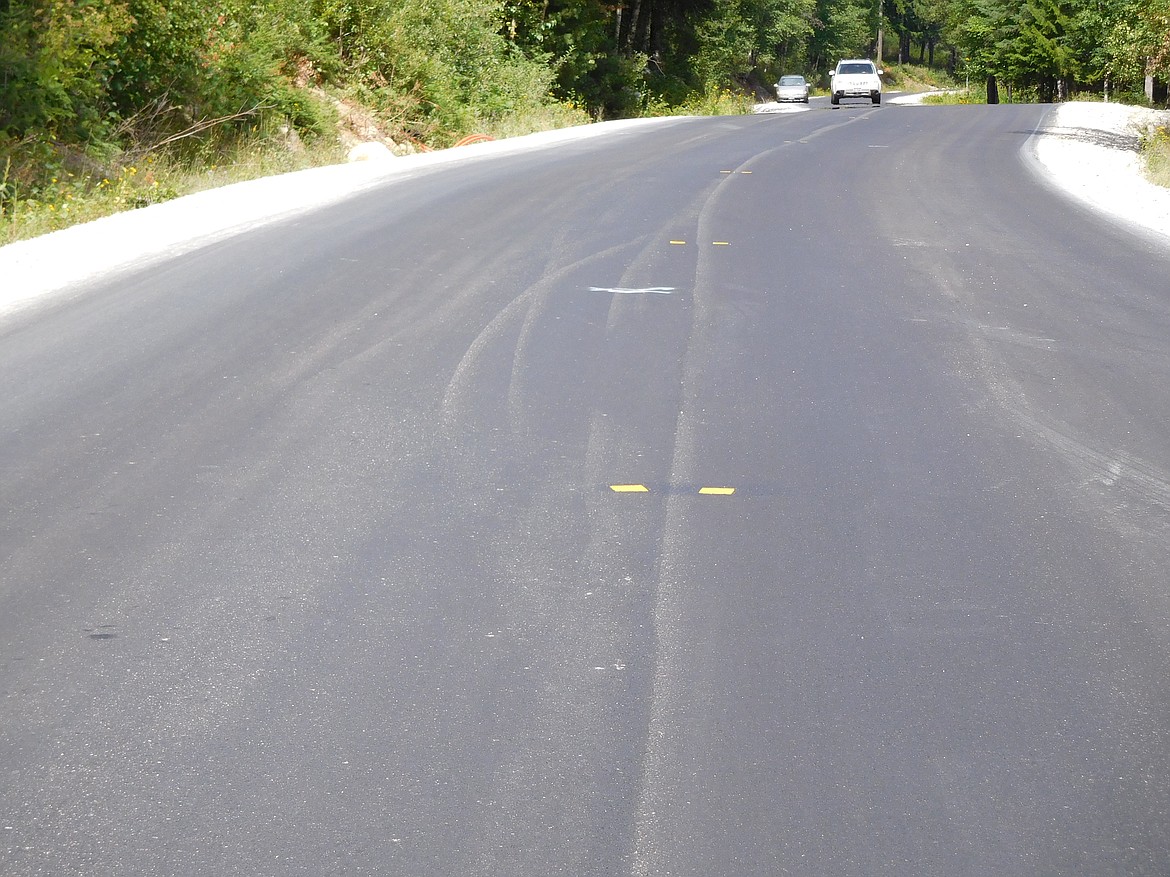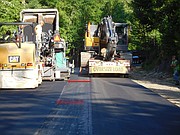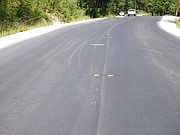Local project earns national transportation award
SANDPOINT – If you look closely on the road curving up to Schweitzer, you’ll find a discreet innovation that has earned national recognition. Look for the little yellow squares in pairs along the centerline.
Made of yellow reflective thermoplastic tape in small divots in the road, the innovative Recessed Thermoplastic Markers received the Federal Highway Administration’s Build a Better Mousetrap award. Also known as the Pioneer Award, the distinction is given to a project that comes up with a creative solution to a local problem.
The problem facing Schweitzer Mountain Road involved losing track of the centerline due to plowing and other heavy winter maintenance.
“At the time, I called it the centerline markers,” said Scott Hansen, the man who came up with the innovation around 2015. “I was not expecting any recognition for it.”
Hansen, who recently retired as road supervisor for the Independent Highway District, came up with the idea for the centerline markers as a way to save time and money with annual repainting.
It started with figuring out a way to save money on grinding. The Independent Highway District uses equipment to grind into hard surfacing, most commonly used to create rumble strips along the shoulders and centerline. But Hansen said that equipment is costly to use.
Instead of grinding divots into the asphalt after it has hardened, Hansen decided to try something different by putting divots into the road during the beginning of the paving process. When pavers receive asphalt for hard surfacing, it’s around 300 degrees Fahrenheit. At that temperature, the asphalt is soft enough to manipulate, typically by forming it into a smooth surface with a steamroller.
The creation process for the recessed markers begins with a team of three crew members who put dots in the road marking where the centerline needs to be. Then four-by-six inch metal plates are placed on top of the determined centerline, after that, a steamroller rolls over the plates creating small divots in the road. The plates are removed, and a couple of days later after the asphalt cools, reflective yellow tape is melted into the divots with a torch. The reflective tape is the same material commonly used for crosswalks.
With this process, crews no longer have to measure the road looking for the centerline every year, since the markers can withstand years of wear from traffic and snowplows.
Project Engineer Ryan Luttmann submitted the project to the Independent Highway District, which later passed the idea along to the Federal Highway Administration for consideration for the national award. The Build a Better Mousetrap award is given to a project based on how “SMART” it is: specific, measurable, achievable, realistic, and time-balanced.
“We’re looking for original innovative projects that provide long term value,” said Neil Gaffney in an interview on Thursday.
Gaffney is a public affairs officer for the U.S. Department of Transportation’s Federal Highway Administration. The aim of the administration is to help smaller communities improve their transportation systems in a cost effective way. Gaffney cited the innovation as being successful in its ability to extend the use of centerline markings, which qualifies the project as “the first to solve a maintenance problem with a homegrown solution.”
But if you ask Hansen, he was just doing what made sense for those who work on the road year round. When asked why it was referred to as a “mousetrap,” Hansen explained that there are many ways of building an actual mousetrap, just like how there are many ways for determining the centerline of a road.
“It’s another way of having a good idea,” he said.







